LisbonLisboaPortugal.com
The best independent guide to Lisbon
LisbonLisboaPortugal.com
The best independent guide to Lisbon
Miradouro de São Pedro de Alcântara viewpoint and garden – guide for 2025
The Jardim de São Pedro de Alcântara is one of the best viewpoints in central Lisbon, providing an easterly view across Baixa and Mouraria, right up to the castle.
This is a lively viewpoint and garden, where musicians come to perform, pop-up bars are frequently held, and tourists flock to admire the wonderful views. While the upper terrace may be constantly bustling, the lower terrace is one of the most peaceful places in the city, offering a distinctly romantic atmosphere.
São Pedro de Alcântara becomes a magical location just before sunset, as the sun casts a golden glow on the opposite hill and a refreshing evening breeze drifts through.
Insight: The Jardim São Pedro de Alcântara is located at GPS: 38.71511, -9.14422 (link to google maps)
Related articles: Lisbon’s best viewpoints
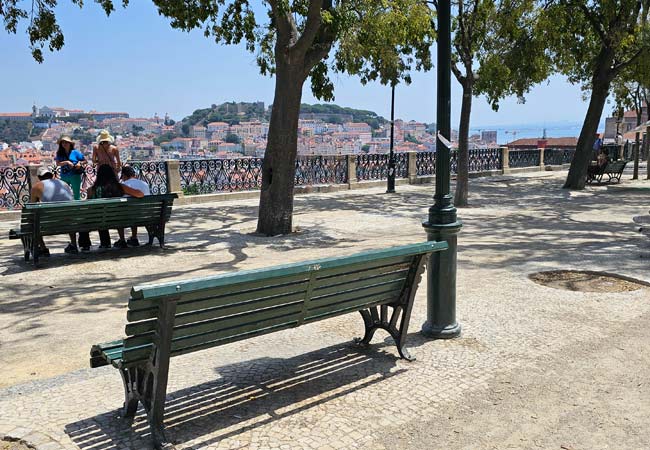
The shaded garden is pleasant stop on a hot summer’s day
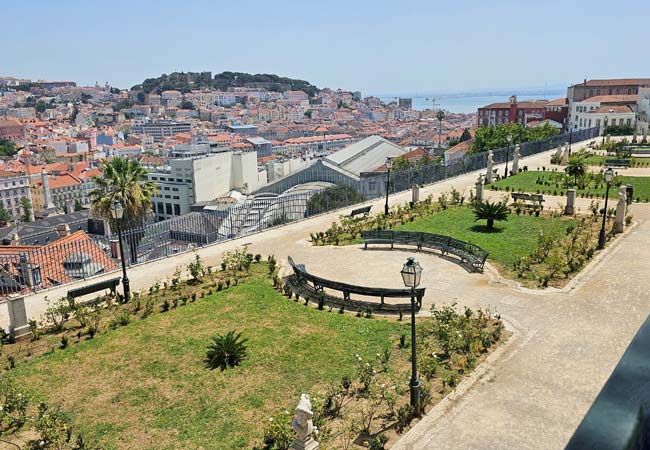
The lower terrace was inspired by classical French gardens
As well as being an amazing spot to take in the view, it is also a meeting point between three different areas of Lisbon. To the east (down the hill) is the historic Baixa district, to the west, is the affluent Príncipe Real neighbourhood, while to the south is the fun-packed neighbourhood of Bairro Alto.
All of these areas have influenced the atmosphere of the Jardim São Pedro de Alcântara - it is jovial and social, yet has a touch of class and history. To the rear of the garden is the upscale Solar do Vinho do Porto (Port tasting rooms), while below the park are eight ever-changing displays from the Galeria de Arte Urbana (GAU).
The Jardim São Pedro de Alcântara is also the upper stop of the delightful Elevador da Glória, a funicular railway that climbs the steep hill up from the Baixa district. Also passing behind the park is the number 24 tram, with its cheery yellow carriages heading to Rato or downhill to the Praça Luís de Camões.
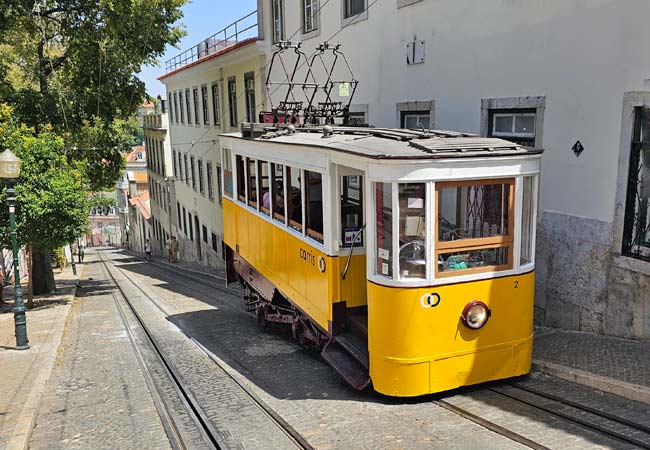
The Elevador da Glória
The garden's open and dual-level terrace did not happen by accident, but was constructed in the 17th century as the initial stage for a mighty aqueduct that would cross the valley to the Graca district. The aqueduct was never started due to the 1755 earthquake, however the shear wall at the base of the garden was built in preparation.
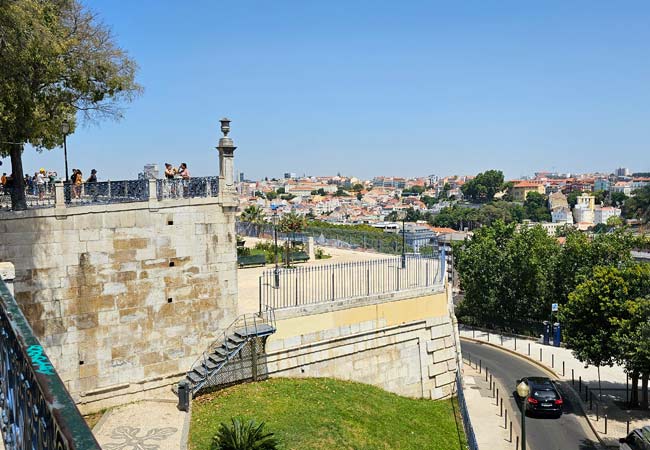
The statue at the centre of the garden commemorates the printing and newspaper heritage of the Bairro Alto district. The statue is of Eduardo Coelho, the founder of the 'Diario de Noticias' newspaper, while the barefoot boy in front of the statue depicts an early newspaper seller.
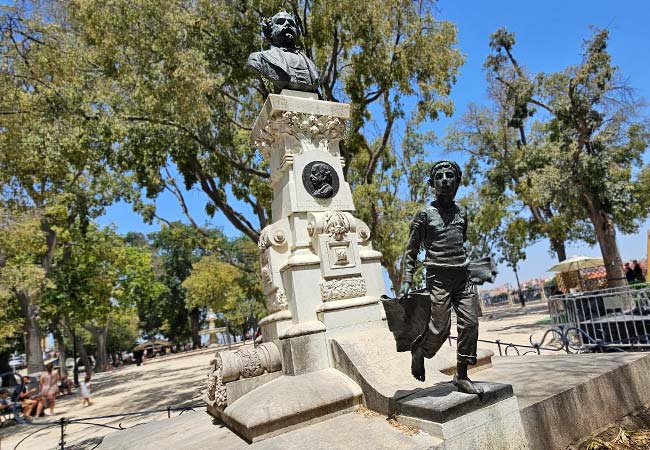
The centrepiece of São Pedro de Alcântara garden is a striking Baroque fountain, that originally stood in the grounds of the Palácio da Bemposta. The fountain was transferred here when the palace was converted into a Military Academy, and its central courtyard made into a car park.
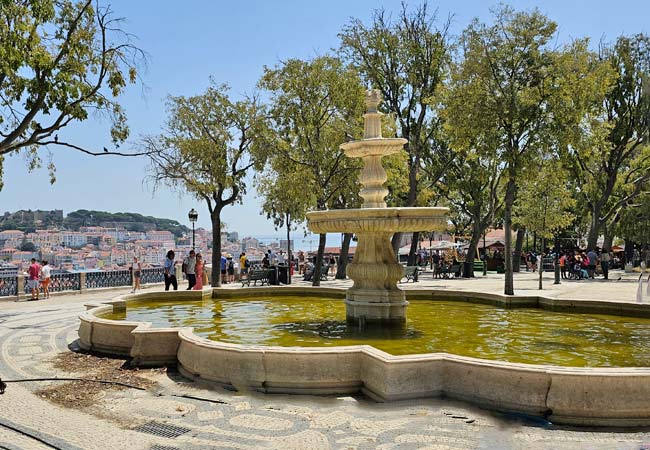
On the northern side of the garden is the Miradouro bar, which is based in a traditional kiosk. This is a pleasant location for a coffee, alcoholic beverage or a light meal.
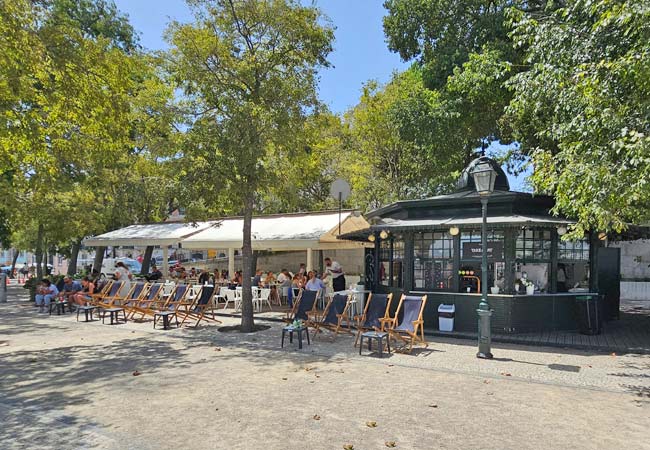
Running along the Rua de São Pedro de Alcântara, the street behind the park, is the number 24 tram route. This connects the lower section of Bairro Alto (the Praça Luís de Camões) to Campolide, passing through the length of the Príncipe Real district.
This is a much quieter alternative tram route to the E28, which also uses the traditional yellow trams. A single fare purchased on board costs €3 (and has to be in cash), but a much better idea is to purchase the 24-hour public transport ticket, which also includes Elevador da Glória.
Tip: Ride the tram from Praça Luís de Camões up to the Jardim do Príncipe Real, and the walk back is all downhill.
Related articles: 24 tram guide
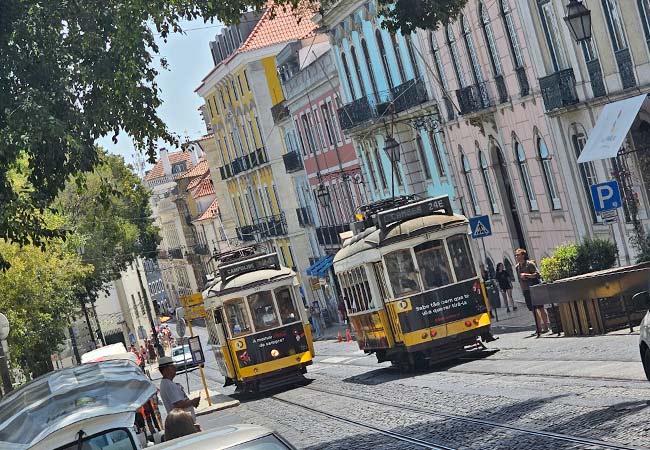
The number 24 trams at the stops just behind the Jardim de São Pedro de Alcântara
The Elevador da Glória is a funicular railway, with its charming 1920s carriages climbing one of the steepest hills of central Lisbon. The route connects the Praça dos Restauradores in Baixa with the Jardim de São Pedro de Alcântara, which saves you walking up the 17 per cent gradient of the hill. A return ticket costs €4.20 (in cash), but this is included in the 24-hour ticket price.
The ride is short, at only 265 meters long, and takes just 3 minutes to travel. However it is a truly unique experience of Lisbon. It is possible to walk up the hill, but it can be very draining in the heat of summer.
Related articles: Elevador da Glória guide
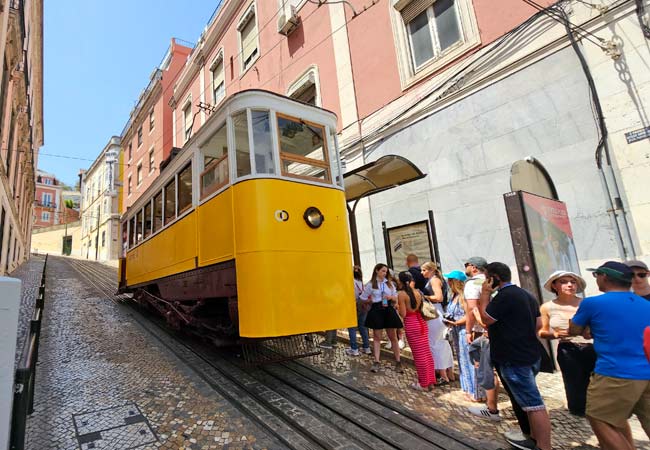
The Elevador da Glória at the base of the hill
Below the Jardim de São Pedro de Alcântara - and along the route of the Elevador da Glória - are eight boards used by the Galeria de Arte Urbana (GAU). This is an initiative to give street and graffiti artists a legal setting to display their works, with the artworks constantly changing and sometimes provocative. The original idea was to reduce the amount of graffiti on the Elevador da Glória, but it hasn't really helped.
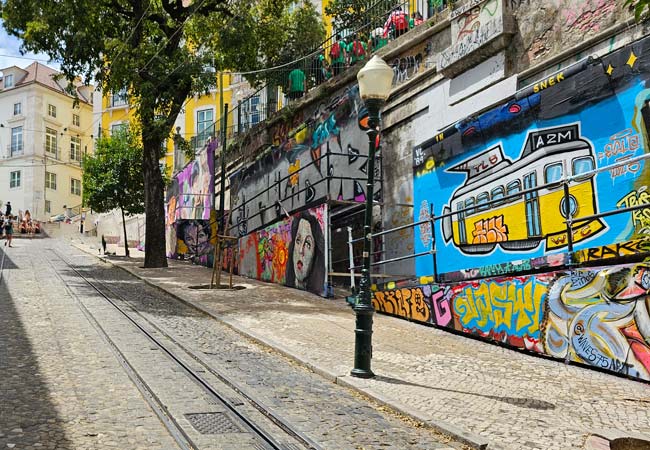
At the Miradouro de São Pedro de Alcântara viewpoint is a map created by Fred Kradolfer in 1952, which was painted on tiles. This is useful for pointing out the sights of Lisbon, many of which can be seen from here.
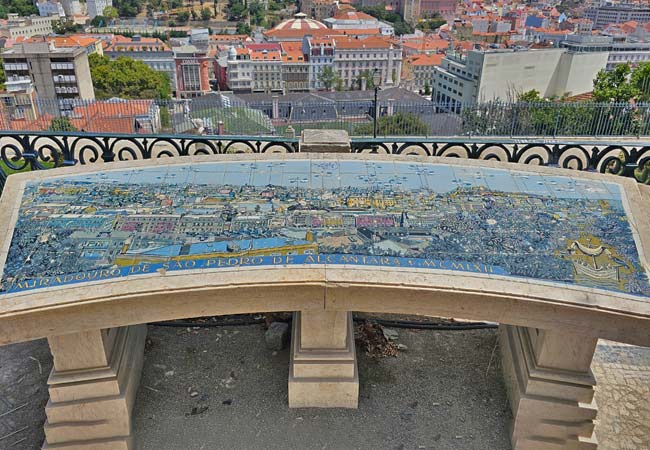
The wonderful 'Lumi Rooftop' bar and restaurant is close to Jardim de São Pedro de Alcântara if you fancy somewhere a bit more special for lunch – though it is only marginally more expensive than the many bland tourist restaurants of Baixa.
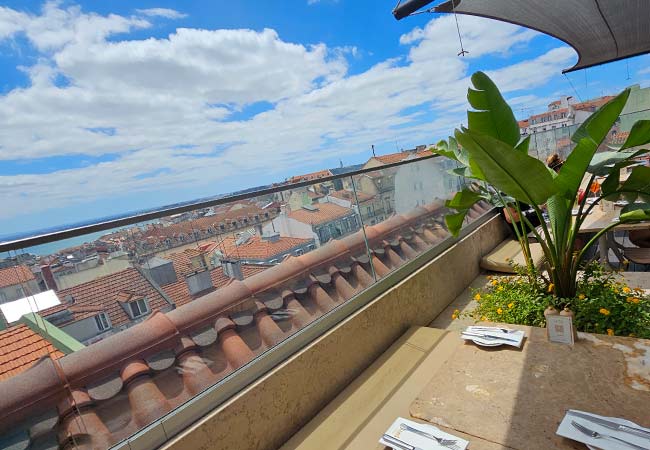
Igreja de São Roque
Close to the Jardim de São Pedro de Alcântara is the Igreja de São Roque. This was the earliest Jesuit church in Portugal and is a stunning example of Baroque architecture. Construction began in the 16th century, and remarkably it was one of the few buildings in Lisbon to survive the devastating 1755 earthquake. Its plain exterior conceals a richly-decorated interior, adorned with intricate gold leaf, beautiful tiles and impressive paintings.
The Chapel of St John the Baptist is an extraordinary display of 18th-century art and craftsmanship. Commissioned by King John V of Portugal, the chapel was initially constructed in Rome, blessed by the Pope, then dismantled and shipped to Lisbon where it was reassembled inside the church.

Discover more of Lisbon with our most popular guides
If you've found our content valuable, we'd welcome your support.
The digital publishing landscape has evolved significantly. As a small independent publisher, we face growing challenges. Search engines increasingly favour paid content over organic results, while AI-generated content often reproduces original work without attribution.
To support our work, please consider bookmarking this page (press Ctrl + D) for quick access. If you find an article helpful, we'd be grateful if you'd share it with friends on social media.
For specific questions, please see our Reddit community at r/LisbonPortugalTravel.
Should you notice any outdated or incorrect information, please contact us at [email protected]
Thank you for helping us continue to provide valuable content in an increasingly challenging digital environment.
A complete list of all of our Lisbon articles
If you've found our content valuable, we'd welcome your support.
The digital publishing landscape has evolved significantly. As a small independent publisher, we face growing challenges. Search engines increasingly favour paid content over organic results, while AI-generated content often reproduces original work without attribution.
To support our work, please consider bookmarking this page (press Ctrl + D) for quick access. If you find an article helpful, we'd be grateful if you'd share it with friends on social media.
For specific questions, please see our Reddit community at r/LisbonPortugalTravel.
Should you notice any outdated or incorrect information, please contact us at [email protected]
Thank you for helping us continue to provide valuable content in an increasingly challenging digital environment.



































